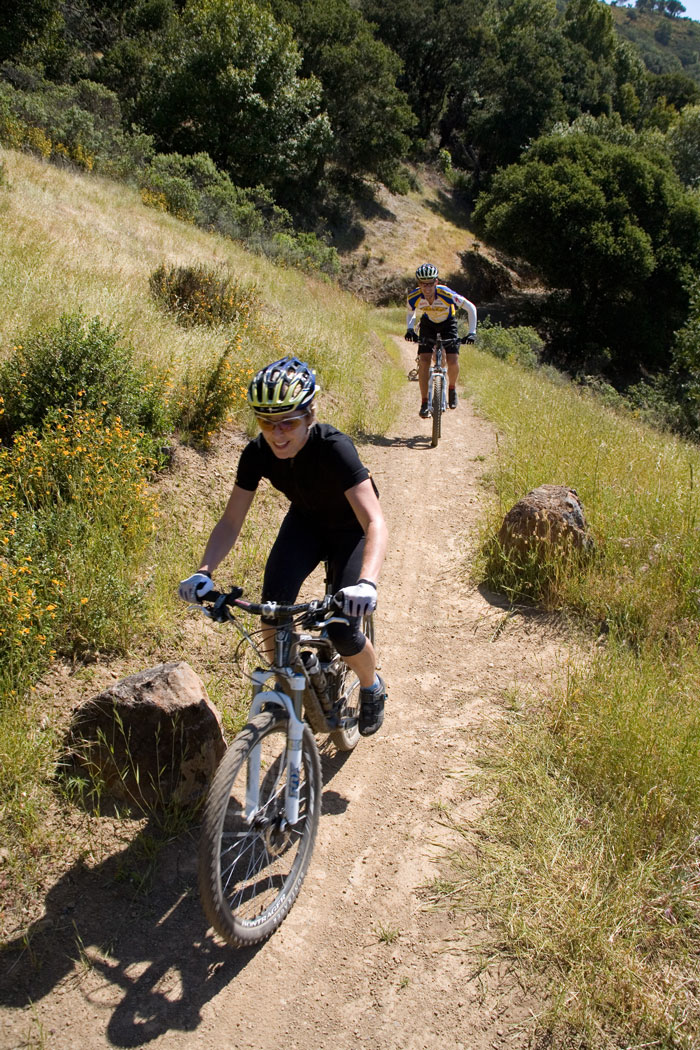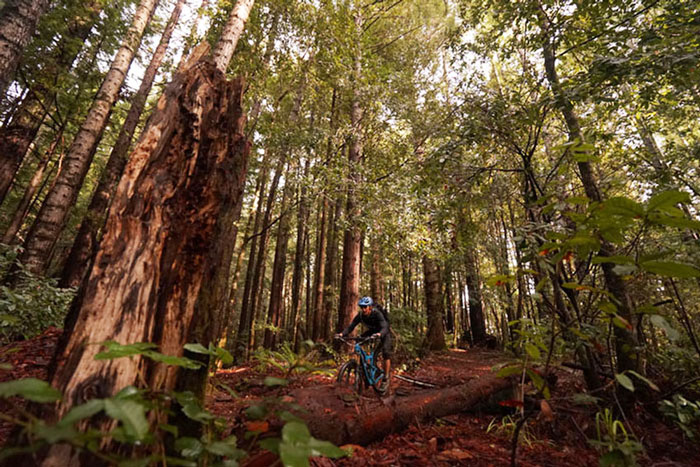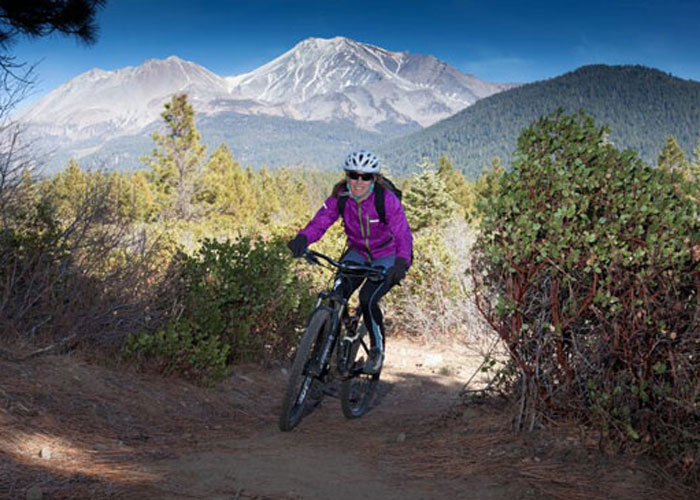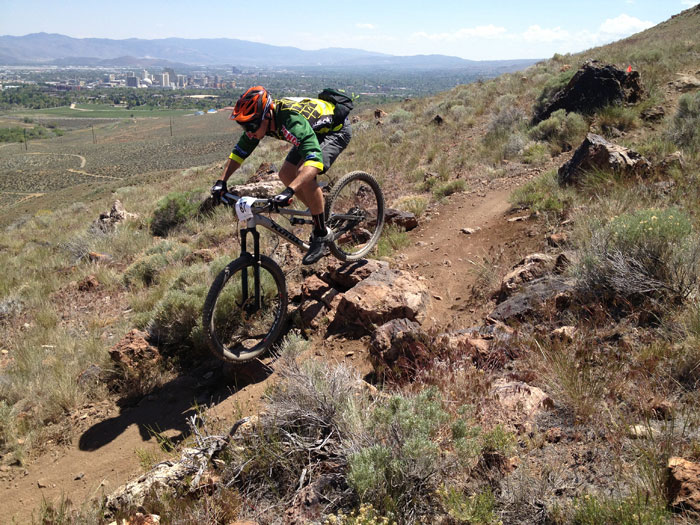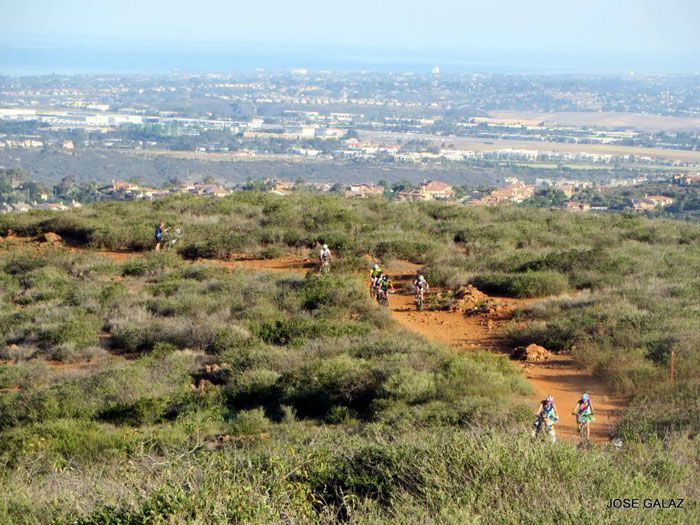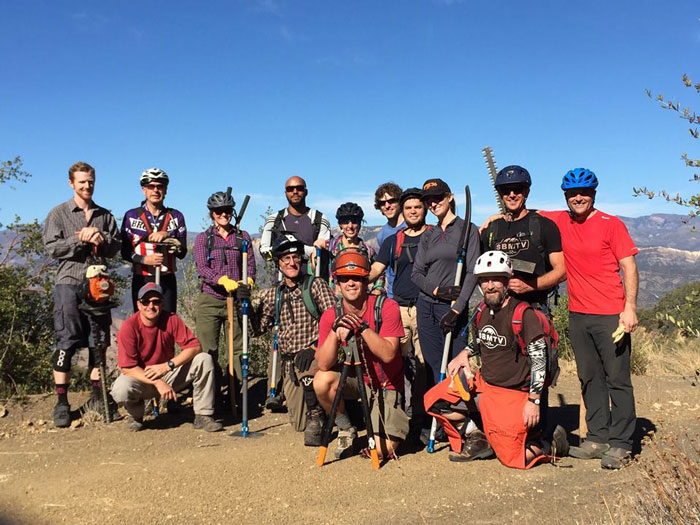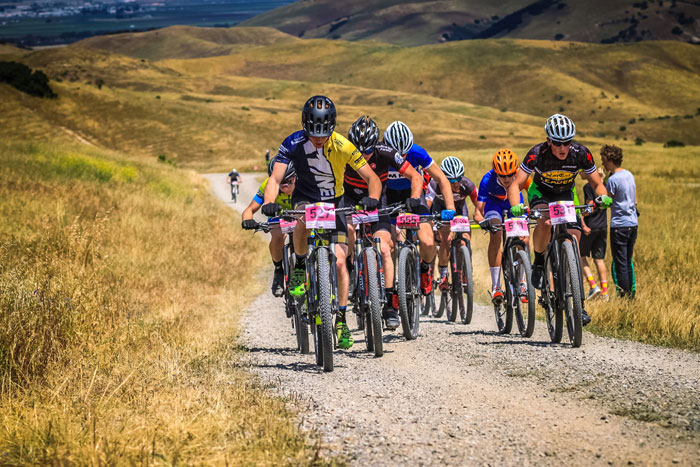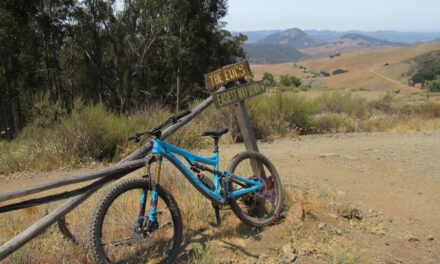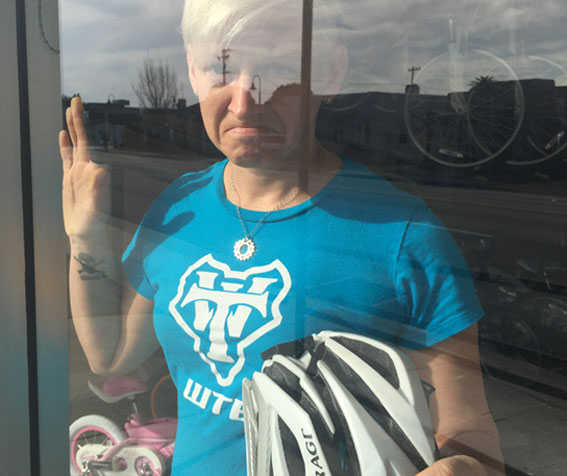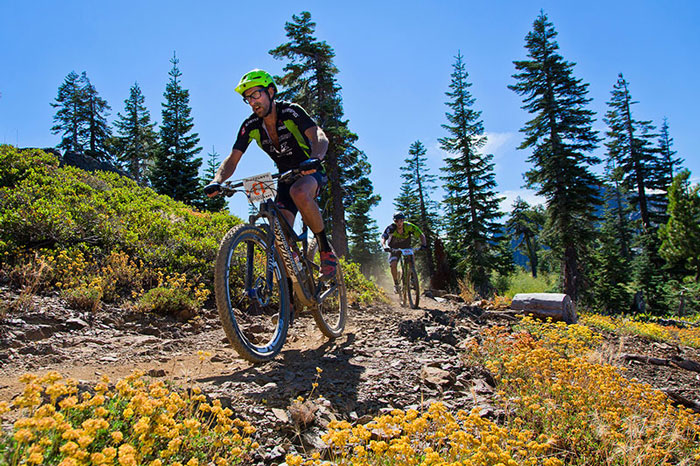- California Enduro Series Announces 2024 Schedule - 11/19/2023
- ASHLAND MOUNTAIN CHALLENGE 2023 – CES RACE REPORT - 10/04/2023
- China Peak Enduro 2023 – CES Race Report - 09/04/2023
How mountain biking trails benefit communities
Compiled by Michele Lamelin
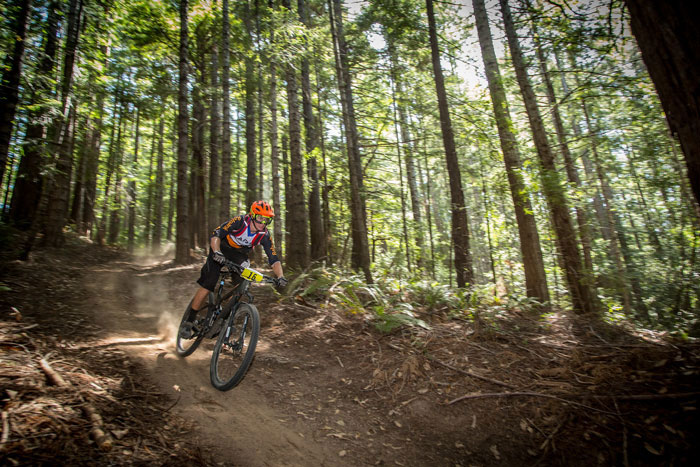
Mendocino is one of many California communities discovering the significant benefits of a healthy, sustainable trail system (Called to Creation).
As mountain biking continues to grow in popularity, communities are rapidly discovering the many benefits of a healthy, sustainable trail system. Community involvement in the natural environment gives people a reason to care about environmental conservation and stewardship, and engages them in the beauty of our public lands. Mountain biking and stewardship provide a positive experience of personal achievement and confidence, health and fitness for adults and children alike, and offer excellent opportunities for families to connect. Well-designed and maintained trails are an increasingly recognized tourism asset, attracting visitors who come to ride, eat, shop and stay. Read on about how mountain biking and healthy trails have benefited communities throughout California.
Auburn / Folsom
The recent restoration of the Culvert Trail in Auburn State Recreation Area has opened this well-loved trail to a wider range of mountain bikers. Severe erosion and damage from a wildfire led to a major revamp led by Folsom Auburn Trail Riders Action Coalition. The resulting flow trail allows for both novice and expert riders to have their frills while improving their skills. The Culvert Trail serves as an artery connecting over 40 miles of other trails in the canyon. Its location – nestled between the populous Sacramento metro area and Lake Tahoe – allows for year-round riding that’s easily accessible. This helps to supports the Auburn economy, with four bicycle shops, an array of specialty restaurants, and a growing list of breweries in a nod to the beer-loving mountain biking community. Learn more at fatrac.org.
Downieville / Graeagle
Downieville and the Lakes Basin region by Graeagle are proven examples of
how trails can help communities thrive. Downieville’s population of 282 supports two full service bike shops and shuttling services driven solely by mountain bike tourism. Sierra Buttes Trail Stewardship and their bike shop, Yuba Expeditions, helped transform this small community into an internationally known mountain bike destination. The Downieville Classic Mountain Festival draws hundreds of people which directly benefits local eateries, stores and hotels. With the growing popularity of Mills Peak Trail and the Lakes Basin trails, neighboring Graeagle is quickly becoming another must-visit destination. Other towns in the region are now looking to recreation as their next economic boon and are rapidly growing their trail systems. Learn more at sierratrails.org.
Groveland
Groveland is a gateway community that lies just 25 miles outside of the Northern Yosemite Gate. Though this tiny community of 2,500 has seasonal vacation amenities and sees millions of tourists drive through town on their way to the park each year, it has yet to find a way to bolster its off-season economy. As a result, businesses have a high rate of failure, schools lack funding, and there are few community organized recreation opportunities for youth. A local mountain bike club, The Groveland Trail Heads, hopes to change all of that. The club is focused on the construction of destination-worthy mountain bike trails that would attract year-round tourism and strengthen community ties to the surrounding forest, and providing a healthy outlet for local youth and families. Learn more at grovelandtrailheads.org. Also, read about the Trail Stewardship Summit/IMBA Advanced Trail Building School and USFS Chain Saw Certification taking place in Groveland here.
Marin
The multi-use 680 Trail is a great accomplishment for Marin’s mountain biking advocates. It added three miles of new bike-legal trail in a community that’s struggled to bring its trail system into balance for mountain biking. The trail connects a number of communities to the Loma Alta and White Hill Open Space Preserves and provides a corridor the the Bay Area Ridge Trail. While the trail was designed and built as a shared use trail, mountain biking may be the most popular activity given its high elevation and distance from trailheads. The trail utilizes both out sloping and grade reversals to whisk water off the trail in the rainy season, and annual trail days have resulted in enhancements to improve both the user experience and sustainability of the trail. Learn more at marinbike.org.
Mendocino
Mendocino – well known for its quaint bed & breakfast inns, whale watching, art, and wine – is quickly becoming an epic world-class mountain biking destination. The timber industry, once the economic engine of Mendocino County, has been in steep decline for over a decade, and the area has been shifting from a natural resource-based economy to a more service-based economy that relies on tourism and recreation. Leading this trend, the Mendocino Coast Cyclists have been at the heart of designing, building and maintaining singletrack trails in Jackson Demonstration State Forest, the state’s largest forest, which covers 48,652 acres amongst majestic redwoods. Mendocino’s trails are starting to attract bike races, as well. This past June, local mountain bike guiding company and race organizer, Mendocino Bike Sprite, presented The Wild Wood Adventure Enduro, round 3 of the California Enduro Series, which introduced hundreds of mountain biking enthusiasts to the area. Learn more at mendocc.org.
Mount Shasta
Mount Shasta, premier destination for all things outdoors, has begun a One Hundred Miles of Trail campaign with a goal of building ten miles of multi-use trail each year. Driven by the Mount Shasta Mountain Bike Association, the campaign grew out of the success of numerous existing trails such as the recently completed Gateway Trail, an adventurous nine-mile long single track that climbs, dips and banks through nine plus miles of pristine National Forest. The area boasts wide forested multi-use trails idea for families as well as rugged downhill runs that end with a river crossing for the more adventurous rider.Riders can build their skills at the newly minted bike park in Shastice Park. In the development process, the community has been energized by these new sources of healthy recreation, formed closer community bonds, and benefited from tourism. Learn more at bikeshasta.org.
Reno / Peavine
Just over the California border sits the bustling town of Reno, Nevada. Hailed as the Biggest Little City, this town is shifting from the casino culture that built it to being the baby sister of Silicon Valley with a hip midtown district, several micro-breweries and easy access to outdoor recreation. At the forefront of the latter is the expansion of multi-use trails on nearby Peavine Mountain. With the closest trailhead only one mile from downtown and numerous neighborhood access points, there is easy access to the 40 mile singletrack trail network. Over half of that has been built since 2008 by the Poedunks/Biggest Little Trail Stewardship with a trails plan underway for another ten miles in the next few years. Learn more at poedunks.org.
San Diego
Since 1980, San Diego County’s population has increased double that of the national average. The impact of increased urbanization threatens to fragment the county’s open space lands into “islands,” and the associated wear and tear on such areas is severe. The benefit of non-fragmented open space for trails connectivity allows for multiple route options, distributing the user base to reduce local densities. In 2008, San Diego Mountain Biking Association (SDMBA) mobilized to raise awareness via the annual Archipelago Ride (archipelago being a chain of islands). The route, from Carlsbad to Sorrento Valley, has evolved steadily and new trails are currently being built exclusively with SDMBA trained volunteer labor (saving taxpayers about $31,000) to IMBA sustainability standards. Learn more at sdmba.com.
San Luis Obispo
Thanks to the Central Coast Concerned Mountain Bikers and allied hikers and equestrians, the long-standing trail culture of San Luis Obispo County is all about building and sharing sustainable multi-use trails. With about 90 miles of trails built, maintained and amicably shared by hikers, bikers and equestrians (in Montana de Oro State Park, County Parks, SLO City Open Space and the Los Padres National Forest), the community benefits are so obvious that San Luis Obispo made the acquisition of Open Space and the creation of multi-use trails its highest funding priority for the next two years. The tradition of shared use and the wide recognition of community benefit also convinced the local land conservancy to purchase an $11 million property in 2014 and to build 16 miles of new sustainable multi-use trail in the next year. Learn more at cccmb.org.
Santa Barbara
With 220,000 residents and 9,000,000 annual visitors enjoying Santa Barbara’s 40+ miles of multi-use single track; the trail network supports thousands of trails users in a single day. Despite this extreme popularity, the Santa Barbara Mountain Bike Trail Volunteers (SBMTV) has sustained and maintained the health of the trail network through sustainable trail maintenance, collaboration with local land managers, and community outreach. A regional chapter of the International Mountain Biking Association (IMBA), SBMTV navigates the multi-jurisdictional spaghetti of Santa Barbara land managers and trail politics to keep trails safe and open for all users to enjoy. A big part of this success is due to SBMTV’s bell program which distributed over 10,000 bike bells. Bells alert other trail users to an approaching rider and reduce the number of surprise encounters, ensuring good times on the trail for all. Learn more at sbmtv.org.
Santa Cruz
The creation of the Emma McCrary Trail in Santa Cruz and the flow trail at Soquel Demonstration State Forest (SDSF) created much-needed legal mountain biking trails in the area. The process of building both trails – driven by local mountain biking advocacy group Mountain Bikers of Santa Cruz – raised the profile of mountain biking in the community and laid the groundwork for capitalizing on future trail building opportunities. These trails offer more options for riders of all abilities to enjoy the area’s renowned riding, encouraging a healthy lifestyle. Local businesses benefit as a post-ride treat at a favorite brewery or restaurant is often just as important as the ride itself. The Emma McCrary Trail played a key role in the elimination of a hotbed of illegal activities that involved drugs, gangs, transient camping and fires. Learn more at mbosc.org.
South Lake Tahoe
The South Lake Tahoe community rallied behind the unique and popular Corral Trail. In partnership with the Forest Service, Tahoe Area Mountain Biker Association (TAMBA) volunteers crafted a series of mountain bike specific features including berms, table tops, rollers and step ups. A full range of people use the trail from downhillers to families with kids in tow. The influence of Corral Trail has inspired more people to get out and ride. Businesses and marketing agencies (that typically promote nearby casinos) promote the local mountain biking scene, proving its benefit to the community. Learn more at tamba.org.
Learn how you can support sustainable trails in your community by contacting the advocacy organizations listed above, and visiting the International Mountain Bicycling Association (IMBA) website here.
Plus, check out Ride by Design by Matt De Young to learn about the planning of healthy mountain biking trails!




